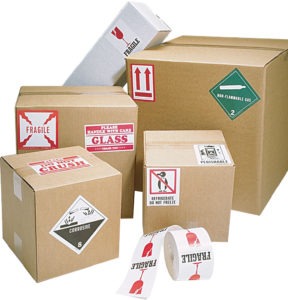Thus, a package must not only provide sufficient cushioning for the items inside but must also be sturdy enough to protect its contents from outside impact and well sealed to prevent it from bursting open while in transit. Here are some general DON’Ts when packaging and shipping to ensure that items arrive in their best conditions.
- Don’t use heavily marked boxes. Avoid unnecessary delivery delays by not using boxes with large amounts of printing or labels on the outside. Bar codes and labels with wrong information may “confuse” scanning machines or shipping personnel. If you have to re-use a box, peel off or cover labels.
- Don’t use weak or insufficient boxes. While recycling is a noble endeavor that helps save the planet, avoid reusing boxes that have lost their integrity. Salvaging these damaged boxes may cause even more problems and expenses. Also make sure that the boxes your use have burst strengths that is appropriate to the weight of the item you are shipping.
- Don’t use inferior packing materials. Packing materials should provide sufficient cushion and padding to your items. Crumpled newspaper or shredded paper may be enough for light-weight items but may not provide the same protection for heavy items because of their low crush resiliency. Use the appropriate filler accordingly.
- Don’t leave any empty space inside a package. Apart from making sure that every item is individually padded, also never leave any empty space that will allow the items to shift and collide with each other. Letting items tumble inside a package is a sure fire way of damaging them.
- Don’t use low-quality tapes. There is a wide array of tapes available but many of them may not ensure that a package will remain sealed and will not pop open during transit. You may think that duct tape is sticky enough but its adhesive can dry out and peel off while in hot delivery trucks, risking your package to burst open. Masking tape and narrow clear tape may not provide adequate strength or adhesion. Only use heavy duty and wide packaging tape.
- Don’t use envelopes for fragile items. You may save some bucks by using padded envelopes but be informed that they offer almost no protection to an item. Only use them when shipping items that can be bent or will not crush under heavy weight.
- Don’t address inadequately. Apart from writing legibly or printing in simple, easily readable font, also use the appropriate materials to ensure that the address will not smear, gets peeled off or simply become illegible when exposed to the elements. Only use permanent markers and water-proof printer ink to address packages. A strip of wide clear tape over the address will help protect it from damage.

